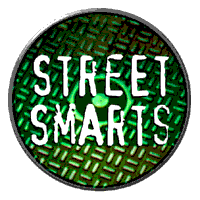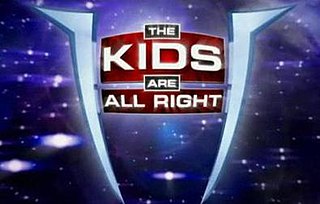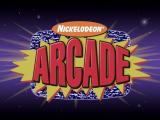SmartAsk had 4 different formats: one for the radio games, and one for TV in each season. The Adilman brothers were infamous for getting the rules to their own show wrong, often to inadvertent comic effect.
Radio show
The first stage of SmartAsk after team's entries were accepted was qualifying for television through a game played on CBC Radio. These games aired every Friday from late September to mid-November of the school year in which the season took place. The games were generally 15 minutes in length. There were three rounds to the game in each season: the 10 point round, the 20 point round and the Lightning Round.
In the 10 and 20 point rounds, players had to wait until the host had finished the reading the question to buzz in. This rule was known as the "no preemptive buzzing" (NPB) rule. In the radio show, teams buzzing in early forfeited their right to answer the question. The questions were given in categories of 3 or 4 questions, such as science or spelling, with the last 20 point category being a viewer-submitted questions category, which was general knowledge. There was no penalty for an incorrect response in these rounds, and if the first team to buzz answered incorrectly, their opponents could then buzz in and provide an answer. These rounds were shortened each season to increase the importance of the Lightning Round. Before the 20 point round started, the host conducted brief interviews with the team captains.
In the Lightning Round, all questions were worth 30 points and could be on any topic. Players could buzz in at any time, making it much like Reach for the Top. However, only one answer was accepted from all players, and incorrect answers were penalized 30 points. Many radio hosts forgot that "steals" (answering a question, hopefully correctly, after the opposing team has answered incorrectly) were not allowed in the Lightning Round. Each year, the Lightning Round on radio was 90 seconds long. Generally, hosts got through anywhere from 7 to 13 questions in that time. Even though the Lightning Round itself was not made longer, the fact that the earlier rounds were shortened increased the Lightning Round's importance in determining the final result.
In Alberta, the Lightning Round was played differently. Each team received 30 seconds in which to answer questions. Teams could choose to pass on a question by indicating that they wished to pass. Otherwise, the questions were still worth 30 points for a correct answer and -30 points for an incorrect answer.
Teams that won their radio game proceeded to compete in the television rounds. The tapings for the TV rounds were done in November and December in the last two seasons. Various strikes in 2002 caused some of the tapings for the first season to be delayed until February 2002.
Season 1
In the first season, there were four rounds: the 20 point round, the 50 point round, the 100 point round and the Lightning Round. The first three rounds were NPB rounds.
In the first three rounds, play was as in the radio NPB rounds. However, on TV, there was a lockout system: if a team buzzed in before the question was finished that team could not buzz in for approximately 1.5 seconds. The questions increased in difficulty with each round. Each round had 3 categories, and each category had about 4 or 5 questions, but some had 3 or 6. The categories were often given humorous names which had some connection to the content of that category.
In the Lightning Round, each question was worth 50 points, with 50 points deducted for an incorrect response. Lightning Round length varied wildly in Season 1, with an average range being 8 to 18 questions. Unlike in later seasons, teams were not given the amount of time for the Lightning Round.
Player interviews were conducted at two different points in the game throughout the season. Players (one from each team) were either interviewed prior to the 100-point round or prior to the Lightning Round. Contestants stayed in their seats for the interviews.
Generally, winning teams scored at least 1000 points. In 4 games, both teams scored at least 1000 points. In their first round game, Victoria School scored 2,120 points.
The winners of Season 1, Kennebecasis Valley High School, would continue their solid play into Seasons 2 and 3. By the end of the series' run, KVHS had the best overall record with 14 wins and 2 losses.
Season 2
The second season's format was probably the most unconventional SmartAsk had during its 3-year run. In the second season, the rounds were the 20 point round, the 50 point round, Dawg Eat Dawg, the Dirty Half Dozen and the Lightning Round.
The 20 and 50 point rounds were NPB rounds. In the 20 point round, there were 2 categories of 3-4 questions each, a video question, and then another category of 3-4 questions. The last category was given by host Mio Adilman, who came out from backstage in a rather embarrassing costume. He came out in a Speedo numerous times; this is generally agreed to be his most embarrassing costume. Other embarrassing costumes from the second season were Mio as a cheerleader, Mio as Mia and "Mio of Green Gables". The 50 point round, however had 2 categories of 3-4 questions each. Several category names were based on a pun.
The Dawg Eat Dawg round was particularly unusual. It was similar to Final Jeopardy from the popular game show Jeopardy! , only that teams bet on members of the opposing team. The teams were given a general category, such as science or sports. Teams then chose a member of the opposing team and placed a bet. The bet had to be a positive integer and a multiple of ten. The chosen players then were given a question. They had five seconds to write down their answer on their chalkboard, and then show it. If the player was incorrect, the opposing team received points equal to their bet. If the player was correct, the opposing team lost points equal to their bet. Some teams, notably semi-finalist Three Hills School bet many points in this round, after scoring them in the NPB rounds. Other teams did not, notably champion Merivale High School, who only ever bet 10 points in the Dawg Eat Dawg round. The Dawg Eat Dawg question was often the hardest question in the game.
The Dirty Half Dozen was the replacement for Season 1's 100 point round. Each of the six players received a question to themselves. If they answered it correctly, their team received 100 points. If they were incorrect, their counterpart on the opposing team (either above or below them) got a chance to steal the question for 50 points; as such, it was possible for a player to earn 150 points during the round. After the Dawg question, Dirty Half Dozen questions were the next hardest in the game.
The Lightning Round format didn't change from Season 1. It was, however, lengthened, although there was one game where only 6 questions were asked. Contestants were told the time for the Lightning Round, however, unless they measured it themselves, they could not tell how much time was left in the round. In the final game, the Lightning Round was three minutes long, the longest of the season. Lightning Round times ranged from about 1:00 to 2:00, with anywhere from 10 to 20 questions being asked in a typical round.
Interviews of one player from each team were conducted before the 50 point round. Both contestants being interviewed went onto the floor, in between the player set and host table. As there were two hosts, the players were interviewed one after another.
Generally, winning teams scored 600 to 800 points. Because of the elimination of the open 100 point round and the difficulty of the Dirty Half Dozen questions, teams rarely broke 1000 points. Only three teams did so: St. George's School scored 1,250 points in their first round game, Saint John High School scored 1,120 points in their third round game and Saint Malachy's Memorial High School scored 1,060 points in their second round game.
Season 3
The third season format saw an end to the Dawg Eat Dawg round and further importance for the Lightning Round. The rounds became the 20 point round, the 50 point round, Smart and Smarterer (meant as a play on Dumb and Dumberer , which was released in mid-June 2003), the Dirty Half Dozen and the Lightning Round.
The 20 and 50 point rounds worked as they did in the second season. The video question was renamed "Nobu Nation" after host Nobu Adilman. Mio's Moment still existed, but Mio's costumes were considered to be not as embarrassing as the by-then infamous Speedo. Some of the worst of the season were Mio in a tutu (he also wore the pink spandex for the rest of the game, which led to a fair deal of banter before the Dirty Half Dozen) and Mio as an armpit hair model.
Smart and Smarterer was a new round, and was moderated by the new host, Sabrina Jalees. The teams were given a category or theme, such as "Capitalize on That!" (political geography) or "Black and White" (general knowledge having to do with the colours black and white). The teams then chose their best player for the topic, and those players went to a special podium, situated where the interviews took place in Season Two. Once there, the two faced off in a 45-second Lightning Round, with each question being worth 50 points, or -50 for an incorrect answer.
The Dirty Half Dozen remained unchanged in format from the second season. The question difficulty was decreased compared to the second season, although it was in this round that differences in question difficulty from earlier rounds to later rounds were most often noticed.
The Lightning Round received an overhaul in Season Three. It was extended, with the average range being from 2:00 to 3:00. It was also divided into two consecutive halves. In the first half, questions were worth 50 points, with, as usual, 50 points being deducted for incorrect answers. In the second half, question value doubled to 100 points, with the incorrect answer penalty being a 100-point deduction. Generally, 10-15 questions were asked in each half of the Lightning Round. Teams were told the amount of time for the round, and they were told during the round when the question values doubled. In the last three games, the time was displayed on the monitor facing the players (which showed the player set so that all players knew the game score at any time).
Interviews were, as in Season 2, conducted before the 50 point round. However, since the interview space from Season Two was being used for the Smart and Smarterer podium, the interviews were conducted on the floor of the set, in front of the player set.
Generally, winning teams scored at least 1000 points. In 9 games, both teams scored at least 1000 points. In their first round game, Central Secondary School from London, Ontario scored 2,140 points, breaking the record set by Victoria School in Season 1. Also, the Bishop's College School-Fredericton High School third round game went to a 3-question overtime, the only time in all three seasons that this occurred. SmartAsk history was also made in the Templeton Secondary School-Archbishop M.C. O'Neill High School first round game, when O'Neill became the only team in the program's run to finish a televised game with a negative total, ending up with -120 points.

College Bowl is a radio, television, and student quiz show. College Bowl first aired on the NBC Radio Network in 1953 as College Quiz Bowl. It then moved to American television broadcast networks, airing from 1959 to 1963 on CBS and from 1963 to 1970 on NBC. In 1977, the president of College Bowl, Richard Reid, developed it into a non-televised national championship competition on campuses across America through an affiliation with the Association of College Unions International (ACUI), which lasted for 31 years. In 1989, College Bowl introduced a (sponsored) version of College Bowl for historically black colleges and universities (HBCUs) called Honda Campus All-Star Challenge (HCASC) which is ongoing. In 2007, College Bowl produced a new version and format of the game as an international championship in Africa, called Africa Challenge. The College Bowl Campus Program and National Championship ran until 2008.

Reach for the Top is a Canadian academic quiz competition for high school students. In the past, it has also been a game show nationally broadcast on the CBC. Matches are currently aired online through Reach for the Top's official YouTube channel. Teams qualify for national rounds through several stages of non-televised tournaments held at high schools throughout Canada during the year which are known as Schoolreach.

The National Science Bowl (NSB) is a high school and middle school science knowledge competition, using a quiz bowl format, held in the United States. A buzzer system similar to those seen on popular television game shows is used to signal an answer. The competition has been organized and sponsored by the United States Department of Energy since its inception in 1991.
Idiot Savants is an American television game show on the MTV network which ran from December 9, 1996, to April 25, 1997. It was created by Michael Dugan and Chris Kreski, directed by Steve Paley, and hosted by comedian Greg Fitzsimmons.
Knowledge Bowl is the name for several interdisciplinary academic quiz bowl-like competitions across the United States and the world. The questions for many Knowledge Bowl competitions are supplied by the Academic Hallmarks company of Durango, Colorado.

Street Smarts is an American game show that featured two in-studio contestants trying to predict the outcome of interviews of people who were found on the street. The show, which was hosted by Frank Nicotero, aired in syndication from 2000 to 2005. Nicotero would be on locale with the on the street contestants, virtually any and everywhere in the United States. The in studio gameplay however, was at G4 and TMZ, headquarters, Victory Studios, in Glendale, California.

Stump the Schwab is an American game show that aired on ESPN2 and ESPN Classic from July 8, 2004 to September 29, 2006. The show featured three contestants trying to defeat Howie Schwab, ESPN's first statistician, in a sports trivia contest. Stuart Scott was the show's host. The show also appeared on Canada's The Score Television Network.
Battle of the Brains is a quizbowl show in the Richmond and Hampton Roads areas of Virginia. The show is Central Virginia's longest running highschool quiz TV Show. It currently airs on WTVR in the Richmond area, and WTKR in Hampton Roads. The current show began in Richmond in 1975, and it originally aired on a local PBS member station until it was canceled by the station. Its 2002–2003 season was aired on a public-access television cable TV station, before the Richmond CBS affiliate added the show, where it currently airs on Saturday mornings at 10:00 A.M. The Hampton Roads program began with the 2004-2005 season, formerly airing on WAVY-TV. In the 2017-18 season, it airs on WTKR at 11:00 A.M. As of August 2024, it has changed the timeslot to Saturday mornings at 10:00 A.M.
Scholastic Scrimmage is a high school quiz bowl game show that was launched in 1975. It airs on WLVT-TV, the PBS affiliate for the Lehigh Valley in eastern Pennsylvania.
It's Academic is an Australian children's game show which is based on the long-running American version of It's Academic, and pits students from different schools against each other in a test of knowledge covering a number of diverse subjects including English, mathematics, science, geography, sport, music and popular culture.

Miljoenenjacht, officially Postcode Loterij Miljoenenjacht, is a Dutch game show, sponsored by the country's postcode lottery, where a contestant and at-home viewer could win up to €5,000,000 or as little as €0.01. The show is broadcast at various times, spanning across six episodes for each set. The program was originally shown by TROS on NPO 2, but moved to creator John de Mol's channel Tien in 2005. After the channel was discontinued after its sale to the RTL Group, the program moved to RTL 4. In 2019, the program moved to SBS6 due to the transfer of Linda de Mol from RTL to SBS.
Blokken (Blocks) is a Belgian quiz show based on the video game Tetris. It is broadcast on VRT 1 and hosted by Belgian television personality Ben Crabbé. The show is the longest running quiz show on Belgian television, with 22 seasons. On 10 December 2017 the show aired its 5000th episode.

YSU Academic Challenge is the Youngstown, Ohio area high school quiz bowl program that airs on ABC station WYTV on Saturday nights and reairs on Sunday nights on MyYTV. Stan Boney, the chief meteorologist at WYTV, is the host of this program that premiered in 2002. In 2008 Academic Challenge changed its appearance but kept its old rules.

The Kids Are All Right is a British game show that aired on for BBC One from 12 April to 14 June 2008 and is hosted by John Barrowman.

Nick Arcade is an American children's game show created by James Bethea and Karim Miteff and hosted by Phil Moore, with Andrea Lively announcing, that aired on Nickelodeon in 1992. It aired originally during weekend afternoons, with reruns airing until September 28, 1997. In the first season, the shows were taped in December 1991 and aired in early 1992. It was taped at Nickelodeon Studios at Universal Studios Florida in Orlando, Florida. In Nick Arcade, two teams of contestants played two initial trivia rounds, with the winning team advancing to the "Video Zone" to play against the virtual "Video Game Wizard" of the day.
On the Spot is an American game show produced by and broadcast on KGW-TV in Portland, Oregon as a daily series from September 1984 to October 1988. Newscaster Larry Blackmar was host, while local disc-jockey Michael Bailey announced.
Baseball IQ is an American television game show airing on the cable channel MLB Network. The show debuted on January 24, 2012, and its first season ended on February 23, 2012, with the season championship. The show is hosted by MLB Network anchor Matt Vasgersian. The show's focus is baseball trivia.
Download is an Australian children's game show which aired on the Nine Network from 2000 until 2002. Scott McRae hosted the show in 2000–2001; he was replaced by Nathan Lloyd in 2001–2002, while Emily Jade O'Keefe hosted the final season of the show. The co-host for the final season was Miss Bytes.

Common Knowledge is an American television game show hosted by Joey Fatone that aired on Game Show Network from January 14, 2019 to August 13, 2021. On April 17, 2019, media reports stated that GSN had renewed the show for a 130-episode second season. On March 25, 2021, GSN renewed the show for a third season, which premiered on May 17, 2021.

Master Minds is an American game show airing on the Game Show Network. The show debuted on June 10, 2019, under the title Best Ever Trivia Show, hosted by Sherri Shepherd and regularly featuring Ken Jennings, Muffy Marracco, Jonathan Corbblah, Arianna Haut, and Ryan Chaffee. The series was renamed Master Minds on April 6, 2020, with Brooke Burns replacing Shepherd.











